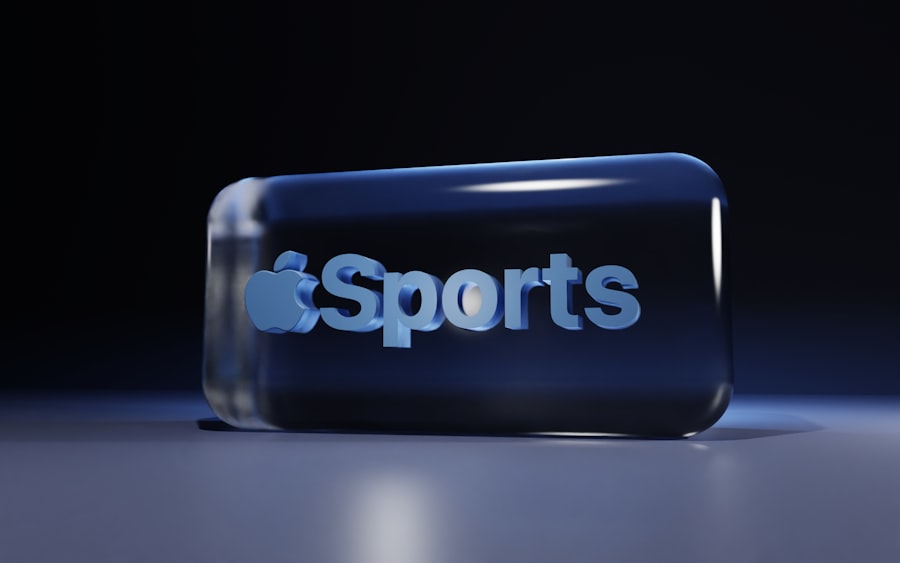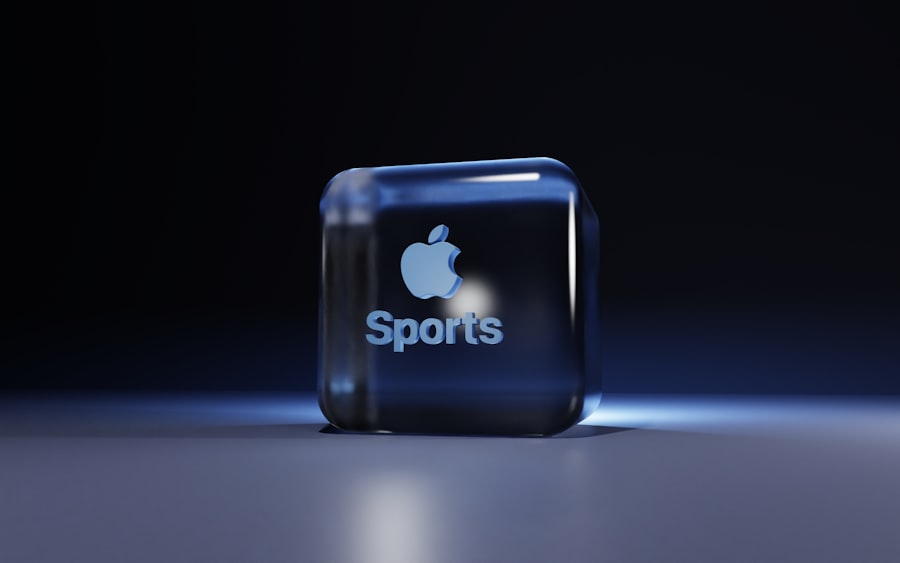The advent of social media has revolutionized the landscape of sports marketing, creating a dynamic platform where teams, athletes, and brands can engage with fans in real-time. Unlike traditional marketing channels, social media offers a two-way communication avenue, allowing for immediate feedback and interaction. This immediacy fosters a sense of community and belonging among fans, who can share their thoughts, experiences, and emotions related to their favorite teams and athletes.
The ability to reach a global audience instantaneously has made social media an indispensable tool for sports marketers aiming to enhance brand visibility and loyalty. Moreover, the demographic reach of social media is particularly appealing to sports marketers. Platforms like Instagram, Twitter, and TikTok attract younger audiences who are increasingly consuming sports content online rather than through traditional media outlets.
This shift necessitates a strategic approach to marketing that resonates with these digital natives. By understanding the nuances of each platform, marketers can tailor their messages to fit the preferences and behaviors of their target audience, ensuring that their campaigns are not only seen but also engaged with. The power of social media lies in its ability to create authentic connections between brands and fans, transforming passive viewers into active participants in the sports narrative.
Key Takeaways
- Social media is a crucial tool for enhancing brand awareness and fan engagement in sports marketing.
- Building a strong community through interactive content fosters deeper connections with fans.
- Collaborations with influencers and athletes amplify reach and credibility.
- Measuring campaign performance helps optimize strategies and maximize impact.
- Combining social media with traditional marketing ensures a cohesive and effective promotional approach.
Leveraging Social Media Platforms for Brand Awareness
To effectively leverage social media for brand awareness, sports organizations must first identify which platforms align best with their target audience. For instance, Instagram is particularly effective for visually-driven content, making it ideal for showcasing game highlights, behind-the-scenes footage, and athlete lifestyles. On the other hand, Twitter serves as a real-time news platform where teams can share updates, engage in conversations, and respond to fan inquiries.
By strategically utilizing these platforms, sports marketers can amplify their brand message and reach a wider audience. Additionally, the use of hashtags plays a crucial role in enhancing brand visibility on social media. By creating unique and memorable hashtags for campaigns or events, teams can encourage fans to participate in conversations and share their own content.
For example, during major sporting events like the Super Bowl or the FIFA World Cup, teams often create specific hashtags that fans can use to join the discussion. This not only increases engagement but also allows brands to track conversations and measure the impact of their campaigns. Furthermore, collaborating with other brands or influencers can expand reach even further, as cross-promotion introduces the brand to new audiences who may not have been previously aware of it.
Engaging with Fans and Building a Community

Engagement is at the heart of successful sports marketing on social media. It is not enough to simply broadcast messages; brands must actively participate in conversations with their fans. This can be achieved through various strategies such as hosting Q&A sessions with players, conducting polls about game predictions, or sharing user-generated content that highlights fan experiences.
By fostering an interactive environment, sports organizations can cultivate a loyal community that feels valued and connected to the brand. Building a community also involves recognizing and celebrating fan contributions. For instance, many teams showcase fan art or highlight stories of dedicated supporters on their social media channels.
This not only acknowledges the fans’ passion but also encourages others to engage and share their own experiences. Additionally, creating exclusive content for followers—such as sneak peeks of upcoming merchandise or early access to ticket sales—can further enhance fan loyalty. When fans feel like they are part of an exclusive club, their emotional investment in the brand deepens, leading to increased support both online and offline.
Utilizing Influencer and Athlete Partnerships
| Metric | Description | Example Value | Importance |
|---|---|---|---|
| Engagement Rate | Percentage of audience interactions (likes, comments, shares) relative to total followers | 4.5% | High – Indicates audience interest and interaction |
| Reach | Number of unique users who have seen the influencer or athlete’s content | 1,200,000 | High – Measures potential audience size |
| Conversion Rate | Percentage of audience who take a desired action (purchase, sign-up) after exposure | 2.3% | High – Directly tied to campaign effectiveness |
| Cost Per Engagement (CPE) | Average cost incurred for each audience interaction | 0.75 | Medium – Helps evaluate cost efficiency |
| Follower Growth | Increase in brand or campaign followers during partnership period | 15,000 | Medium – Reflects brand awareness impact |
| Brand Sentiment | Qualitative measure of audience perception and attitude towards the brand | Positive (85%) | High – Influences long-term brand equity |
| Content Shares | Number of times influencer or athlete content is shared by users | 25,000 | Medium – Amplifies organic reach |
| Impressions | Total number of times content is displayed, regardless of clicks | 3,500,000 | High – Measures overall visibility |
Influencer marketing has emerged as a powerful strategy within sports marketing, particularly when it comes to reaching younger audiences who are more likely to trust recommendations from individuals they admire rather than traditional advertisements. Collaborating with athletes who have a strong social media presence can significantly amplify a brand’s message. These partnerships allow brands to tap into the athlete’s existing fan base while also leveraging their credibility and authenticity.
For example, when a popular athlete shares a post endorsing a particular product or service, it often resonates more deeply with fans than conventional advertising methods. This is because fans perceive athletes as relatable figures who embody the values and lifestyle they aspire to. Additionally, influencer partnerships can take various forms—from sponsored posts and product placements to co-branded merchandise—allowing for creative flexibility in how brands engage with audiences.
The key is to ensure that these partnerships feel organic and align with both the athlete’s personal brand and the overall messaging of the campaign.
Creating Compelling and Shareable Content
The creation of compelling content is essential for capturing attention in the crowded social media landscape. Sports marketers must focus on producing high-quality visuals and engaging narratives that resonate with fans’ emotions. This could include dramatic game highlights, inspirational stories about athletes overcoming adversity, or humorous behind-the-scenes moments that showcase the lighter side of sports.
The goal is to create content that not only informs but also entertains and inspires sharing among fans. Shareable content often incorporates elements that encourage interaction, such as contests or challenges that invite fans to participate actively. For instance, a team might launch a challenge asking fans to recreate iconic game moments or share their favorite memories using a specific hashtag.
This not only generates user-generated content but also fosters a sense of community as fans rally around shared experiences. Additionally, leveraging trending topics or current events can enhance the relevance of content, making it more likely to be shared across platforms.
Analyzing and Measuring Social Media Campaigns

To gauge the effectiveness of social media campaigns in sports marketing, it is crucial to implement robust analytics tools that track key performance indicators (KPIs). Metrics such as engagement rates, reach, impressions, and conversion rates provide valuable insights into how well content is resonating with audiences. For example, if a campaign generates high engagement but low conversion rates, it may indicate that while fans are interested in the content, they are not compelled to take action—such as purchasing tickets or merchandise.
Furthermore, sentiment analysis can offer deeper insights into how fans perceive a brand or campaign. By analyzing comments and interactions on social media posts, marketers can gauge public sentiment and adjust their strategies accordingly. For instance, if feedback indicates that fans are dissatisfied with certain aspects of a campaign or product offering, brands can pivot quickly to address these concerns before they escalate.
Continuous monitoring and analysis enable sports marketers to refine their approaches in real-time, ensuring that they remain responsive to fan needs and preferences.
Integrating Social Media with Traditional Marketing Strategies
While social media has become a dominant force in sports marketing, it should not exist in isolation from traditional marketing strategies. An integrated approach that combines both digital and traditional channels can enhance overall campaign effectiveness. For instance, television advertisements can drive viewers to engage with social media platforms for exclusive content or promotions.
Similarly, print materials such as flyers or posters can include QR codes that link directly to social media pages or specific campaigns. Moreover, live events provide an excellent opportunity for integrating social media with traditional marketing efforts. During games or tournaments, teams can encourage fans to share their experiences on social media using designated hashtags while simultaneously promoting these hashtags through stadium signage or announcements.
This creates a cohesive experience where fans are encouraged to engage both in-person and online, amplifying the reach of marketing efforts across multiple channels.
Staying Up-to-Date with Social Media Trends and Best Practices
The rapidly evolving nature of social media necessitates that sports marketers remain vigilant about emerging trends and best practices. Platforms frequently update their algorithms and features, which can significantly impact how content is distributed and engaged with by users. Staying informed about these changes allows marketers to adapt their strategies accordingly and maintain relevance in an ever-changing digital landscape.
Additionally, observing successful campaigns from other industries can provide valuable insights into innovative approaches that could be applied within sports marketing. For example, trends such as short-form video content have gained immense popularity across platforms like TikTok; sports marketers can leverage this trend by creating engaging video snippets that highlight key moments or athlete personalities in creative ways. By continuously learning from both successes and failures—whether within their own campaigns or those of others—sports marketers can refine their strategies and ensure they remain at the forefront of digital engagement in the sports industry.



